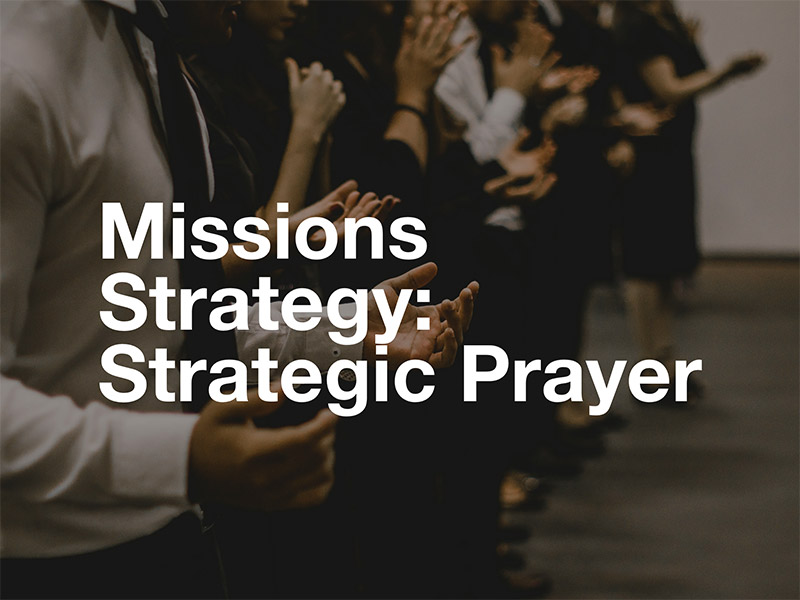Missions Strategies: Part 2 – Strategic Prayer

Missions Partnerships are one of the best vehicles a church can use to engage fully in missions. A healthy partnership will contain five elements, and the second element is Strategic Prayer. Any International Worker (IW) will tell you that prayer is their most coveted component of partnership. Sometimes on the church side of the partnership we fail to appropriately understand and implement a prayer strategy. Perhaps you’ve heard something like, “Yes, we’ll pray, of course, but what do you really need us to be doing?” At times this results from a lack of focused and intentional thought about what engaging in missions prayer would look like. The ideas below may be useful in helping you and your team think through how to develop an effective prayer strategy.
- Posture of Prayer. While we are invited by the Lord to bring our requests to Him, prayer is more than simply reciting a list of needs. We are standing with our IWs before the throne to intercede with them and for them.
- Pray Fervently. We pray with our minds and our emotions.
- Pray Offensively. We are standing with them to take ground from the enemy, so we must remember to pray for more than just defensive protection, but offensive advance.
- Content of Prayer. Certainly the requests of an IW is a high priority, but here are a few other items to consider when standing in the gap.
- Family. Marriages and children of front line workers are special targets of the enemy.
- Team Unity. Just as unity within a church is under attack, so team unity on the field is a target.
- Spiritual Blindness. Collect verses to pray over the lost people that the IWs minister to that deal with opening the eyes of the blind to the gospel.
- Spiritual Filling. Included in this are prayers for the IWs spiritual growth in Christlikeness.
- Threads of Prayer. Prayer should be the thread that connects each ministry in the church to the others. Accordingly, how can prayer for missions touch each ministry? How does it manifest itself on Sunday morning, small groups, kids ministry, youth group, etc.?
- Frequency of Prayer. Related to the previous item, how often will these touch points occur? The temptation is to capitalize on recent enthusiasm and incorporate a prayer time, only to have it end up being a one-off occurrence. Thinking through this rhythm will help curate the intentionality desired.
- Environments of Prayer. Doing the right thing at the wrong time or in the wrong way is sometimes as bad doing the wrong thing. The following are a few aspects to think through.
- Social Size. Every social dynamic has an inherent set of strengths and limitations. Think through which things would work well in small groups, large gatherings, etc.
- Situational Awareness. While an extended time of prayer in a large gathering might work well at a Missions Conference, it may be somewhat out of place on any given Sunday (or if you do, at least give your guests some heads up). Remember, it is not possible or wise to attempt to push everything related to missions into each missions environment.
No doubt you’ve engaged in prayer strategies that have proven helpful and effective in the past. If so, please drop me an email – I’d love to hear them! As always, you are welcome to call anytime to discuss this or other ways that I can assist you or your missions team.
Together with you,
Chris
ctweedy@rmdcma.com or (406) 647-2764
~
